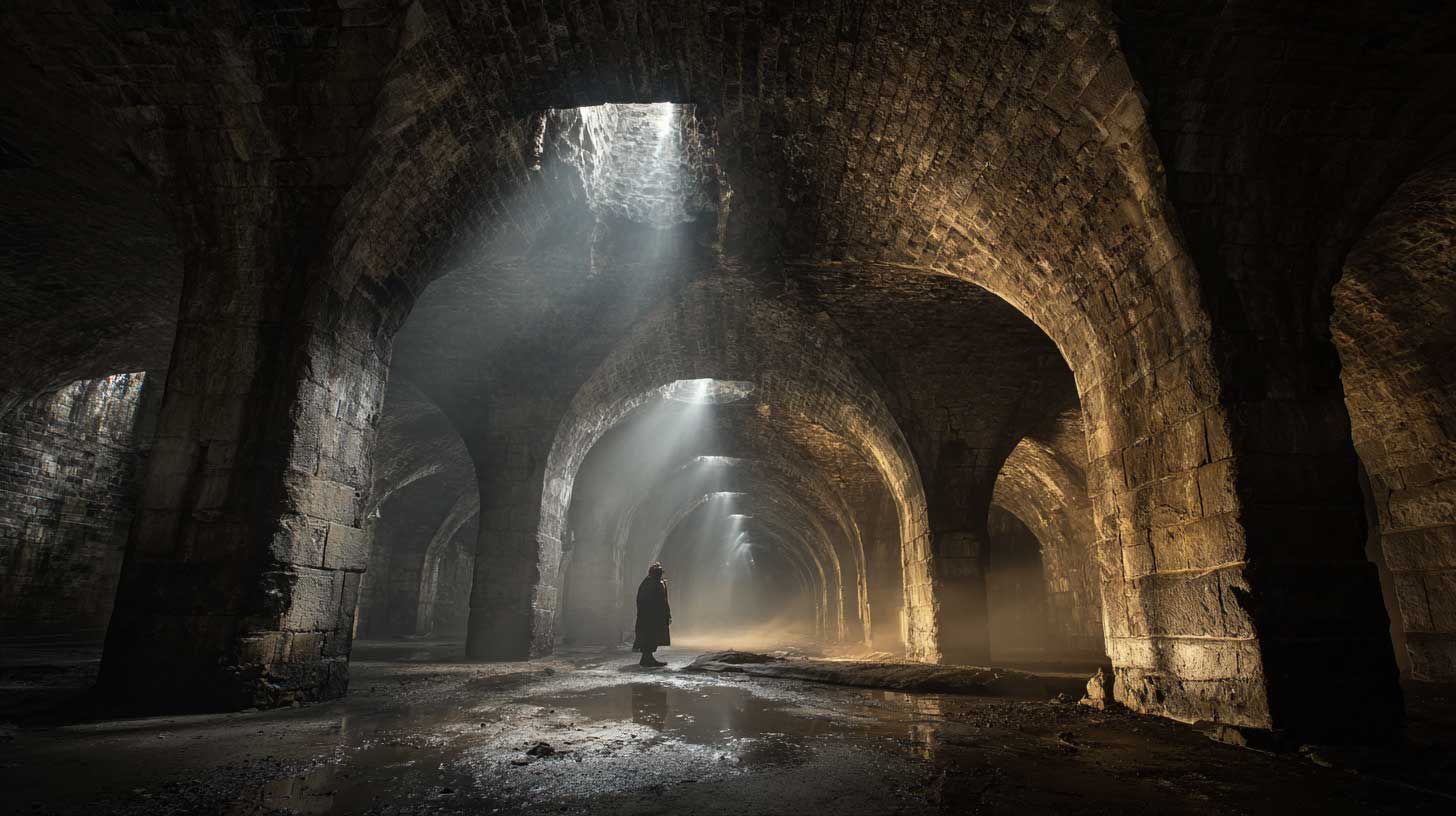
The Underground Vaults of Edinburgh
Beneath the cobbled streets of Edinburgh’s Old Town lies a labyrinth of vaulted chambers that have long captured the imagination. Today, visitors hear of ghosts and paranormal encounters, but the true Edinburgh vaults history is a story of bold city planning, thriving commerce, desperate poverty, and eventual rediscovery.
These vaults were never meant to be dungeons or crypts — they were born from one of the most ambitious engineering projects of Georgian Edinburgh.
This is the real history of the South Bridge Vaults: from their ingenious beginnings in 1788 to their decline into darkness, and finally their rebirth as one of Scotland’s most intriguing underground attractions
The South Bridge: A City Expands
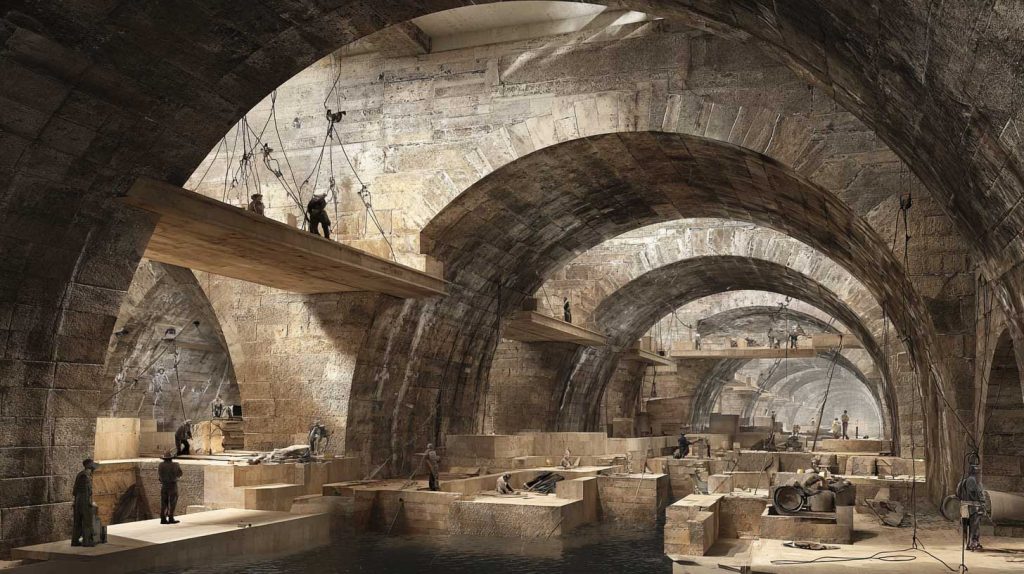
To understand the Edinburgh vaults history, you must first look up to the South Bridge itself. By the late 18th century, the Old Town was dangerously overcrowded. Thousands of residents were crammed into towering tenements that rose up the ridge to Edinburgh Castle. At the same time, the wealthy were beginning to migrate north, across the drained Nor’ Loch, into the spacious New Town.
The solution to uniting old and new was bold: a vast stone viaduct linking the Old Town’s High Street with the expanding southern districts. Construction began in the 1780s, and in March 1788 the South Bridge officially opened with great ceremony.
Unlike most bridges, this one was not designed to cross water. It was built to support buildings, shops, and a new thoroughfare. With 19 arches spanning the Cowgate valley, the bridge was encased in masonry and topped with houses and businesses.
Within its massive stone structure were left dozens of enclosed spaces — not deliberately carved, but formed naturally between the arches and the buildings above. These would become the vaults.
A Hub of Industry and Commerce
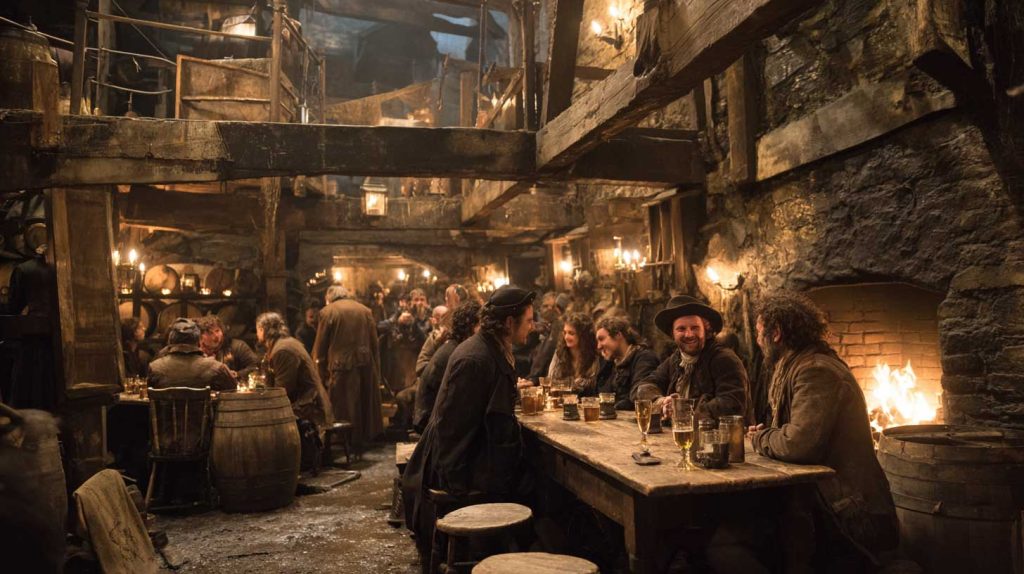
The earliest Edinburgh vaults history is one of opportunity. By the 1790s, entrepreneurs quickly recognized the value of these sheltered, conveniently located chambers.
- Workshops: Noisy and smoky trades — cobblers, tanners, blacksmiths — set up shop underground, keeping the street above clean and respectable.
- Storage: Merchants prized the cool, stable conditions for storing goods. Wine and whisky dealers in particular used the vaults to age and safeguard their stock.
- Taverns and alehouses: A handful of the vaults became lively drinking dens, catering to both tradesmen and travelers moving through the city.
For around three decades, the vaults functioned as an extension of the bustling street economy above. They were never the beating heart of Edinburgh commerce, but they provided vital space in a city pressed for every inch.
A Fatal Flaw: Water and Decay
This prosperity was short-lived. The South Bridge had been built quickly and with imperfect materials. Mortar and sandstone proved porous, and by the early 19th century, water was seeping relentlessly through the walls and ceilings.
What had been useful dry cellars became damp, leaky, and foul-smelling. Merchants abandoned their stores, workshops shut down, and legitimate trade dwindled. By the 1810s and 1820s, the vaults were increasingly abandoned by commerce — but they were not left empty for long.
Descent into the City’s Underworld

The next chapter in the Edinburgh vaults history is the darkest. As businesses left, the poorest of Edinburgh’s citizens moved in.
Families squeezed into tiny, windowless chambers with no ventilation, no sanitation, and only candlelight for illumination. Raw sewage trickled down from the streets above. The vaults became a breeding ground for disease — cholera, typhoid, tuberculosis — and infant mortality soared.
At the same time, crime flourished. Illegal whisky stills, gambling dens, and brothels operated out of the shadows. While poverty was the root cause, the vaults soon gained a reputation as a lawless underworld. Accounts from the mid-19th century describe conditions of almost unimaginable squalor, with hundreds of people living beneath the bridge in misery.
By the mid-1800s, authorities began clearing and sealing parts of the vaults. Some remained sporadically inhabited by vagrants and smugglers, but gradually the underground slums faded into obscurity.
Rediscovery in the 20th Century
For over a hundred years, the vaults were largely forgotten. Then, in 1985, former rugby international and publican Norrie Rowan uncovered them while repairing a leak in his pub. What he found was a time capsule: soot-blackened ceilings from forges, rusted hooks for hanging meat, wine bottles, children’s toys, and remnants of slum life.
This rediscovery sparked new interest. Archaeologists, historians, and tour operators began to explore and document the vaults. Their eerie, preserved atmosphere made them irresistible for ghost tours. By the 1990s, the vaults had re-entered the public imagination, not as places of trade or poverty, but as one of Edinburgh’s most haunted sites.
Between Myth and Reality
Today, ghost stories are an integral part of the vaults’ identity. Visitors hear chilling tales of restless spirits, unexplained noises, and dark presences. While these legends are compelling — and keep the vaults firmly in the spotlight — the true Edinburgh vaults history is equally powerful.
The soot-stained walls still bear witness to the blacksmiths who labored there. The damp-patched floors recall families who fought for survival in appalling conditions. Each vault tells a layered story of ambition, industry, neglect, and tragedy.
Walking Through Edinburgh’s Past
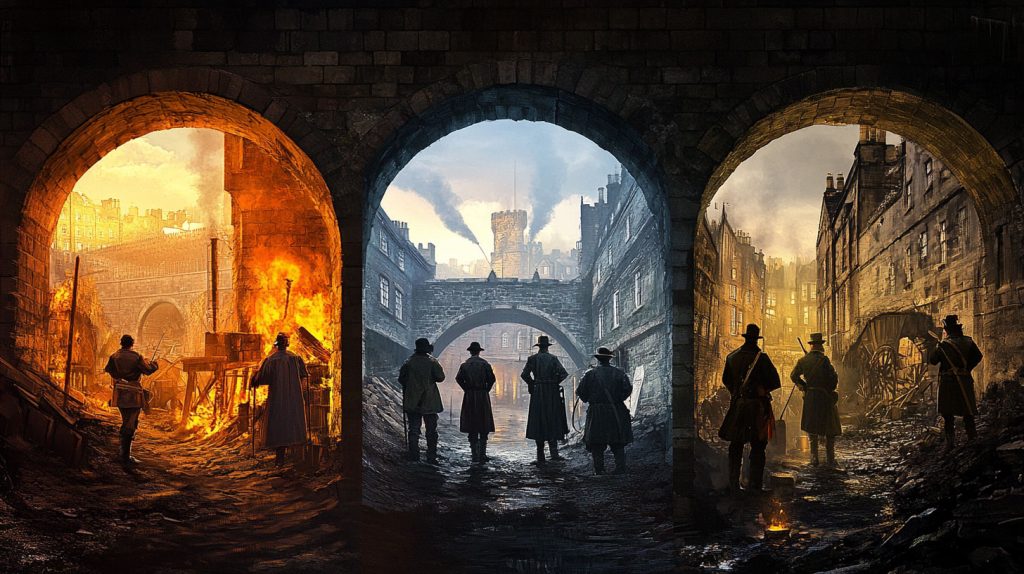
To walk through the vaults today is to pass through centuries of the city’s history:
- Georgian ambition — the bridge that reshaped Edinburgh’s landscape.
- Industrial ingenuity — when every space was pressed into commercial service.
- Urban poverty — when the desperate were forced into the shadows.
- Modern reinvention — when history and myth combined to create one of Scotland’s most unique visitor experiences.
The true Edinburgh vaults history is not just a ghost story. It is a reminder of the unintended consequences of progress, of the stark contrasts between wealth and poverty, and of the hidden lives that so often lie buried beneath a city’s surface.
Conclusion
The South Bridge Vaults are far more than haunted tourist attractions. They are a monument to Edinburgh’s transformation in the late 18th and 19th centuries. Born from ambition, abandoned to poverty, rediscovered by chance, and reimagined for a new age — their story mirrors the city itself: resilient, layered, and endlessly fascinating.









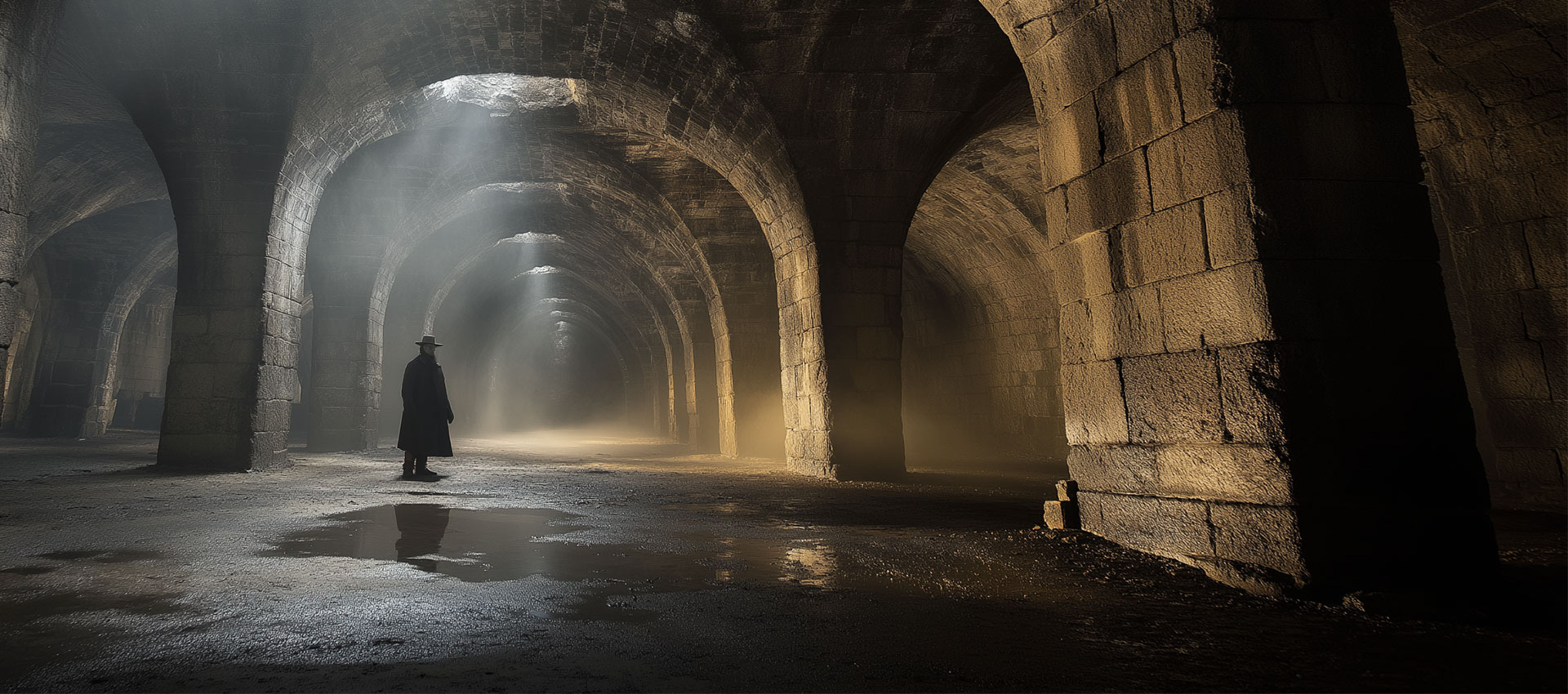




No Comments